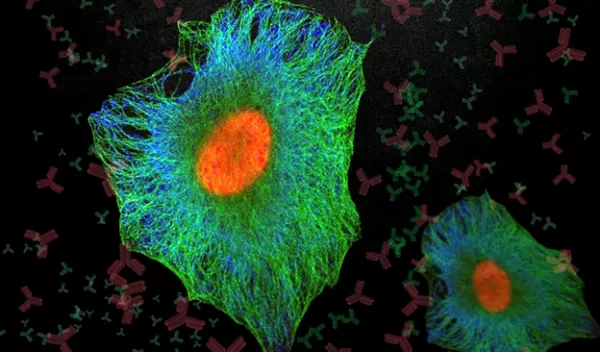
A new control system for synthetic genes
Using an approach based on CRISPR proteins, MIT researchers have developed a new way to precisely control the amount of a particular protein that is produced in mammalian cells.
The U.S. National Science Foundation-supported technique could be used to finely tune the production of proteins such as the monoclonal antibodies used to treat cancer and other diseases, or other aspects of cellular behavior. In the new study, which appears in Nature Communications, the researchers showed that this system can work in a variety of mammalian cells, with consistent results.
"It's a predictable system that we can design up front and get the expected outcome," says William Chen, a biomedical scientist at the University of South Dakota. "It's a tunable system and suitable for many biomedical applications in different cell types."
Chen, along with scientists Timothy Lu, Leonid Gaidukov, Yong Lai and other researchers, co-authored the paper.
Many therapeutic proteins, including monoclonal antibodies, are produced in large bioreactors containing mammalian cells that are engineered to generate the desired protein. Several years ago, researchers in MIT's Synthetic Biology Center, including Lu, began working with Pfizer Inc. on a project to develop synthetic biology tools that could be used to boost the production of these proteins.
The researchers targeted the promoters of the genes they wanted to upregulate. In all mammalian cells, genes have a promoter region that binds to transcription factors – proteins that initiate the transcription of the gene into messenger RNA.
The system the researchers designed includes several components. One is the gene to be transcribed, along with an "operator" sequence, which consists of a series of artificial transcription factor binding sites.
Another component is a guide RNA that binds to those operator sequences. Lastly, the system also includes a transcription activation domain attached to a deactivated Cas9 protein. When this deactivated Cas9 protein binds to the guide RNA at the synthetic promoter site, the CRISPR-based transcription factor can turn on gene expression.
The promoter sites used for this synthetic system were designed to be distinct from naturally occurring promoter sites, so the system won't affect genes in the cells' own genomes.
